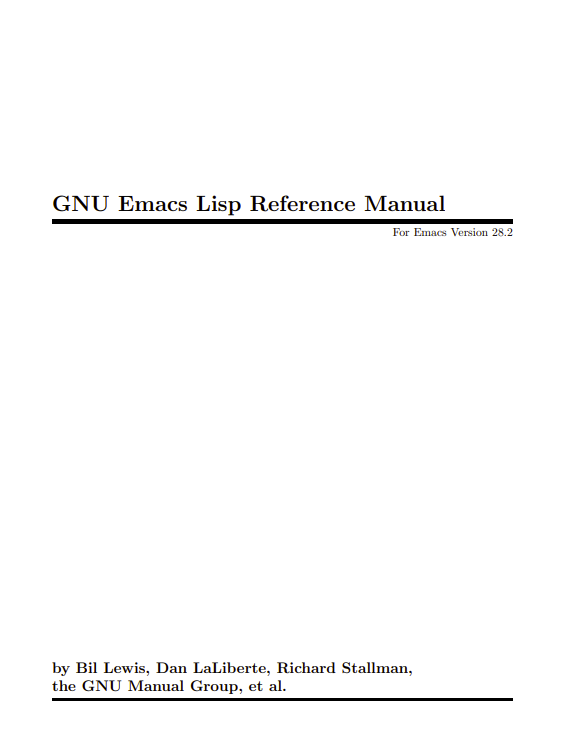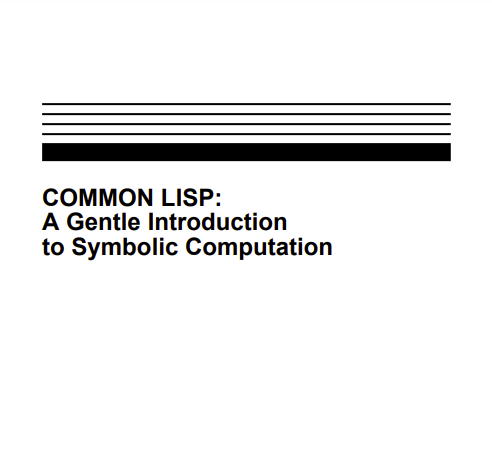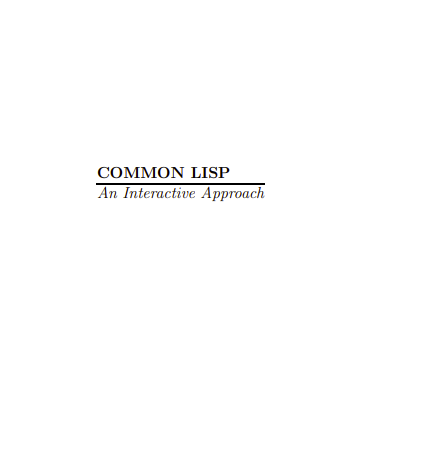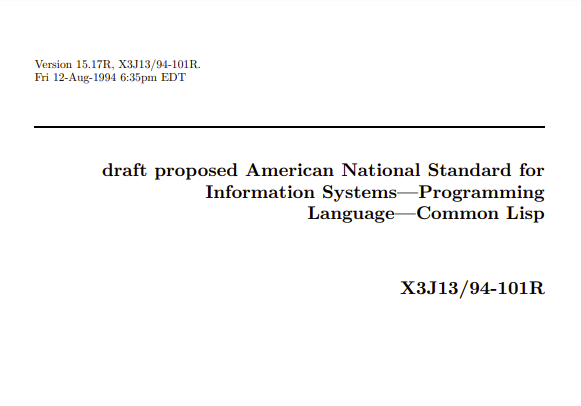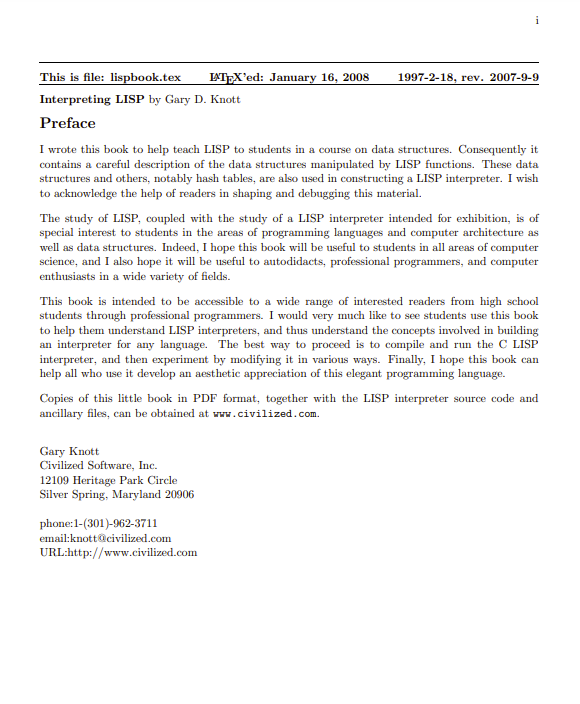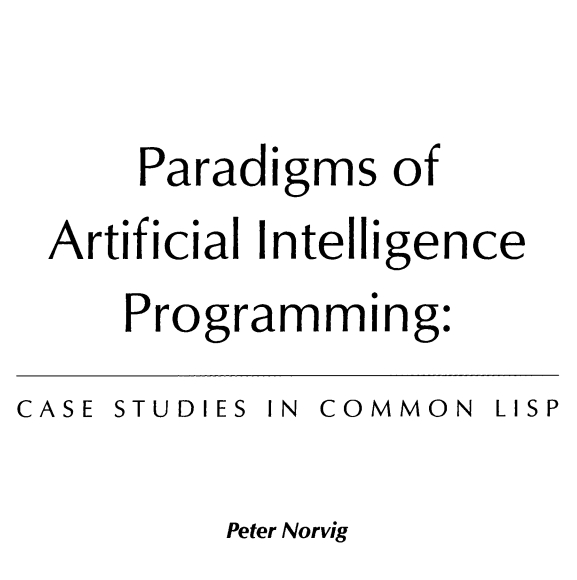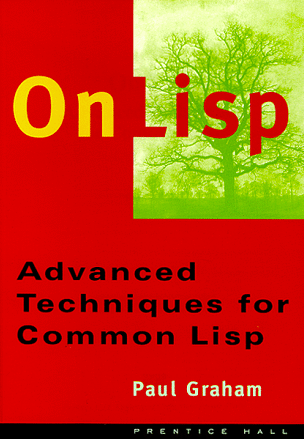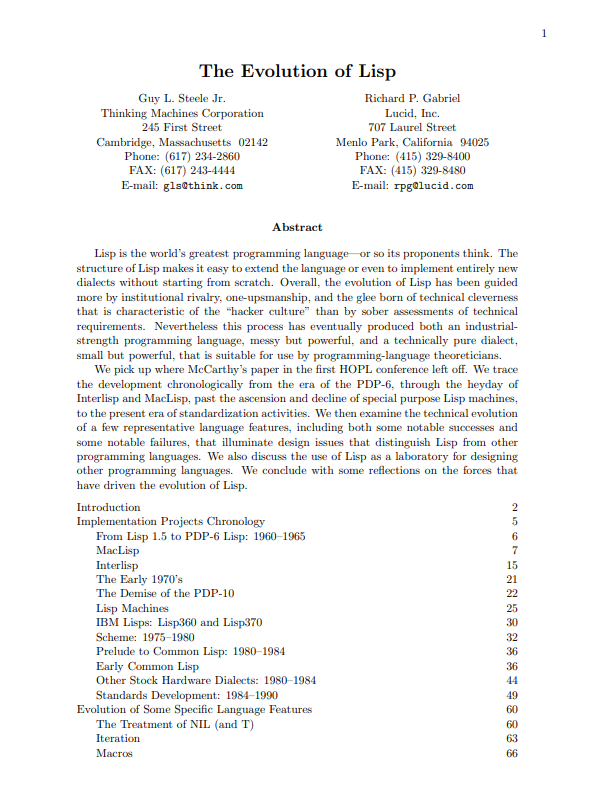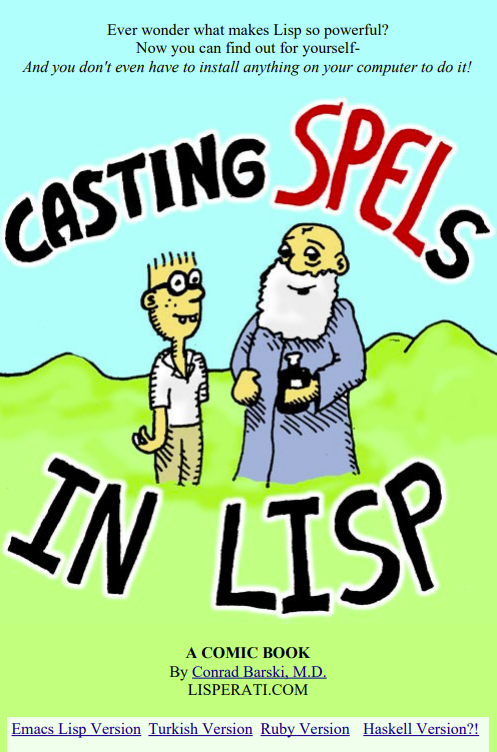Introduction
Most of the GNU Emacs text editor is written in the programming language called Emacs Lisp. You can write new code in Emacs Lisp and install it as an extension to the editor. However, Emacs Lisp is more than a mere extension language; it is a full computer programming language in its own right. You can use it as you would any other programming language.
Because Emacs Lisp is designed for use in an editor, it has special features for scanning and parsing text as well as features for handling files, buffers, displays, subprocesses, and so on. Emacs Lisp is closely integrated with the editing facilities; thus, editing commands are functions that can also conveniently be called from Lisp programs, and parameters for customization are ordinary Lisp variables.
This manual attempts to be a full description of Emacs Lisp. For a beginner’s introduction to Emacs Lisp, see An Introduction to Emacs Lisp Programming, by Bob Chassell, also published by the Free Software Foundation. This manual presumes considerable familiarity with the use of Emacs for editing; see The GNU Emacs Manual for this basic information.
Generally speaking, the earlier chapters describe features of Emacs Lisp that have counterparts in many programming languages, and later chapters describe features that are peculiar to Emacs Lisp or relate specifically to editing.
This is edition [No value for “VERSION”] of the GNU Emacs Lisp Reference Manual, corresponding to Emacs version 28.2.
1.1 Caveats
This manual has gone through numerous drafts. It is nearly complete but not flawless. There are a few topics that are not covered, either because we consider them secondary (such as most of the individual modes) or because they are yet to be written. Because we are not able to deal with them completely, we have left out several parts intentionally.
The manual should be fully correct in what it does cover, and it is therefore open to criticism on anything it says—from specific examples and descriptive text, to the ordering of chapters and sections. If something is confusing, or you find that you have to look at the sources or experiment to learn something not covered in the manual, then perhaps the manual should be fixed. Please let us know.
As you use this manual, we ask that you mark pages with corrections so you can later look them up and send them to us. If you think of a simple, real-life example for a function or group of functions, please make an effort to write it up and send it in. Please reference any comments to the chapter name, section name, and function name, as appropriate, since page numbers and chapter and section numbers will change and we may have trouble finding the text you are talking about. Also state the version of the edition you are criticizing.
Please send comments and corrections using M-x report-emacs-bug. If you wish to contribute new code (or send a patch to fix a problem), use M-x submit-emacs-patch.
